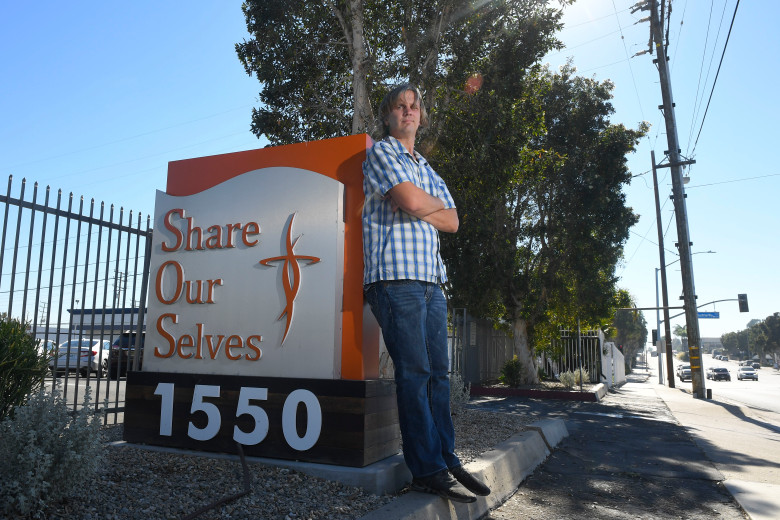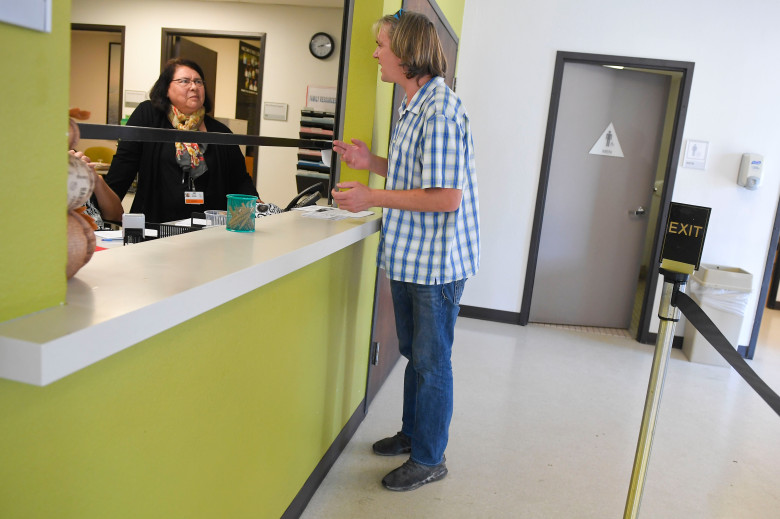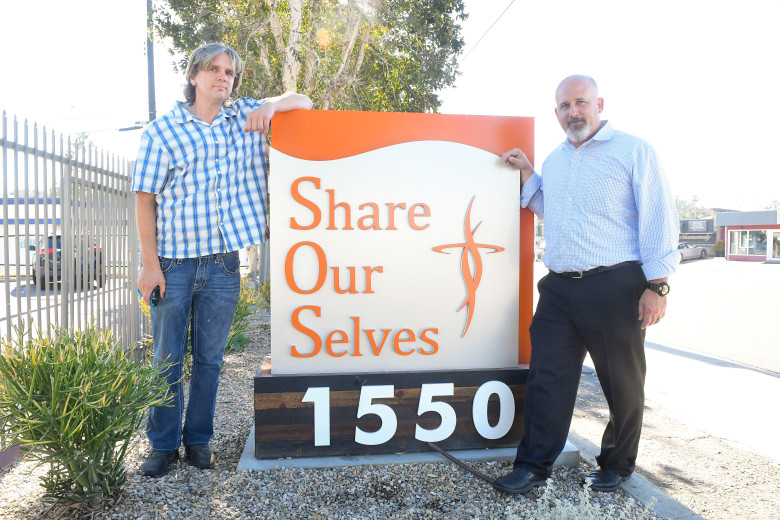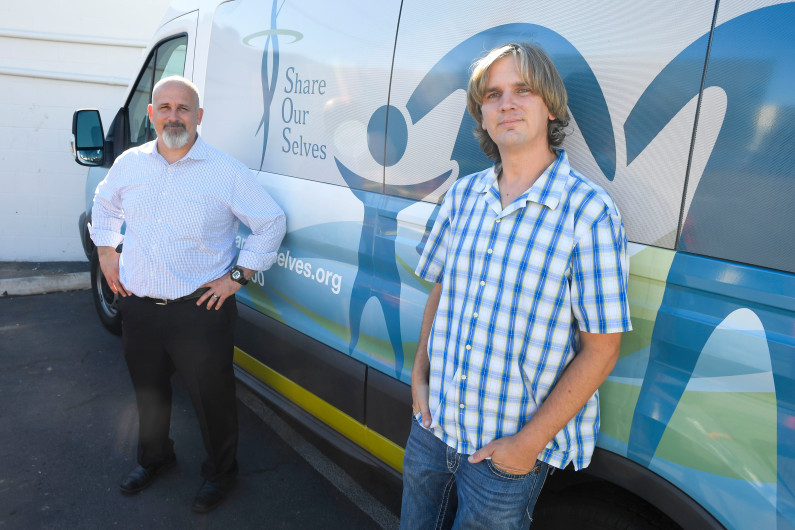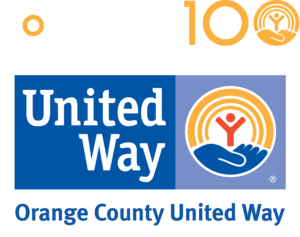Can hearts and minds be changed to support housing homeless people? United to End Homelessness is working on it
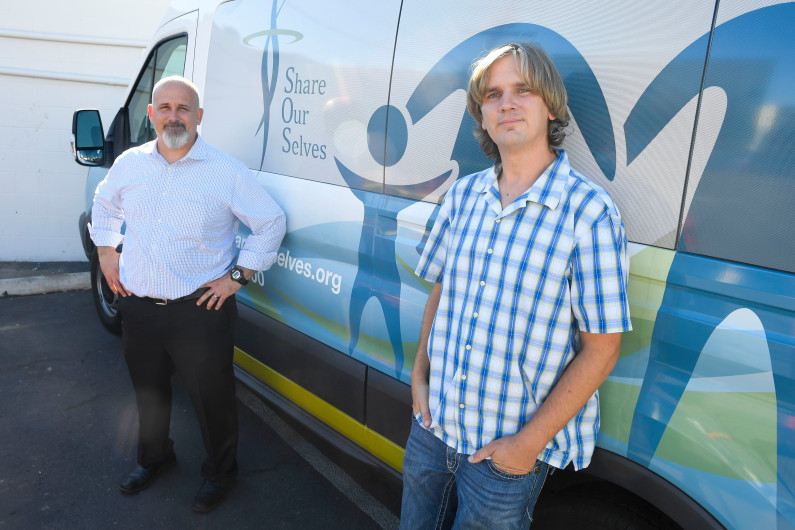
Launching a multi-pronged initiative to raise awareness about homelessness might seem unnecessary.
Orange County’s unsheltered population is visible in one way or another in almost every community. Or somewhere in passing.ADVERTISING
But what is the general public perception and how do you change it?
That’s the crux of the United to End Homelessness campaign that Orange County United Way launched early this year.
The main goal: Educate the public and gain support to house the chronically homeless.
The next big push, Hunger & Homelessness Awareness Week, began Saturday, Nov. 10, and continues to Sunday, Nov. 18.ADVERTISING
Expect a blitz of messages – in print and social media, on billboards, at bus shelters – focused on bringing a more nuanced understanding of how and why people become homeless, who they are, and what to do about it.
The focus is on the chronically homeless: people who have experienced a year or more of homelessness, or repeated episodes, and have a disability. They are eligible for government-subsidized permanent supportive housing that includes ongoing services, often on-site.
Larry Armstrong, who heads the Irvine-based architectural firm Ware Malcomb, crystallized the mission in a message sent last month to the 50-member United to End Homelessness Leadership Council, a group of influential voices in the county’s corporate, business, and philanthropic sectors.
Armstrong chairs the leadership council and told other members that they and their companies and organizations need to spread the word:
“Our goal is to galvanize the community on the issue of homelessness, educating minds and changing hearts so that we may build strong community support for proven solutions to get people housed.”
Galvanizing the community
The local effort mirrors the ationwide Hunger & Homelessness Awareness Week that the National Coalition for the Homeless established in 1975. It always takes place the week before Thanksgiving.
The timing, which coincides with Veterans Day, is fitting. Ending homelessness among military veterans is something that Orange County United Way chief executive Sue Parks posed as highly doable.
Orange County’s last Point in Time Homeless Census in January 2017 recorded 357 military veterans among the 4,792 homeless people in shelters and on the streets – a widely acknowledged undercount.
“We can house 357 veterans, don’t you agree?” Parks said during an early morning breakfast talk at the Pacific Club, a prestigious private establishment in Newport Beach.
But in California, only Riverside County has reached “functional zero” with its homeless veterans population, a term that means it is rare, brief and non-recurring. A 138-unit complex at March Air Force Base is part of the solution.
More supportive housing for military veterans here is on the way, with the 50-unit Veterans Village apartment complex in Placentia expected to be completed in 2020, and groundbreaking this year on a Jamboree Housing development in Santa Ana of 76 affordable apartments
But even proposals to house veterans can stir up opposition. That happened in 2015 when affordable housing developer Community Development Partners sought a $1.9 million loan from Newport Beach to purchase and renovate a 12-unit apartment complex for veterans and senior citizens.
A backlash from dozens of residents in the city’s Newport Shores neighborhood surprised council members. Still, they unanimously approved the loan. That project, called The Cove, opened this year.
Educating minds
A photo of The Cove was part of a slide show that Becks Heyhoe, housing manager for United to End Homelessness, included in the presentation at the Pacific Club.
This past year, more than 1,000 people have attended 28 of Heyhoe’s Homelessness 101 sessions, with participants from church groups, corporations and businesses, and the general public.
Heyhoe also does community outreach around specific projects, such as the contentious 60-unit permanent supportive housing project that the nonprofit organization Pathways of Hope wanted to build in west Fullerton.
After residents raised concerns at community meetings about safety, property values, and a sense of being burdened with more than their fair share, the proposal was withdrawn.
One man who got up and made an early exit at an August meeting that included Heyhoe on a panel of speakers announced out loud as he left, “This is stupid, I’m going home. I’m getting tired of listening to their (expletive).”
Pathways of Hope plans to resubmit their proposal next year, perhaps for a different location in Fullerton or with altered plans.
But the sessions are mostly successful. Heyhoe says she tries to counter what she called “myths and ill-informed rhetoric” about the homeless population by sharing data, such as a 2017 UC Irvine study on the human and financial costs of homelessness in Orange County. The study was co-sponsored by Orange County United Way.
“We talk about whether or not people choose to be homeless, whether or not people want help,” she said. “We know those are the questions people have.”
Changing hearts
Brian Critser is one of the faces of homelessness in Orange County featured in the United Way videos.
“(People) need to understand, it can happen like that,” Crister said, snapping his fingers as he told his story on a recent visit to Share Our Selves in Costa Mesa, which provides medical and dental care, social services, a food pantry, and other help.
Critser, 42, was raised in Fullerton until his parents divorced and his mother moved to the high desert. Both his parents, who worked in the aerospace industry, drank, he said. His father died from cirrhosis of the liver in the 1990s.
Critser dropped out of high school and left the United States in his mid-20s to teach school in Taiwan and live with someone he met online. He spent 13 years abroad before returning when his mother, who bought and operated a motel/restaurant/bar in Arizona, became ill. She, too, drank herself to death, he said.
Critser tried but failed to keep his mother’s financially strapped business afloat. He began experiencing extreme vertigo that made him vomit and impeded his ability to walk straight. He eventually was diagnosed with multiple sclerosis.
Critser survived on about $350 in general relief, along with food stamps. Recently, he and his male partner have stayed in motels or lived out of rented cars. He finally found his way to Share Our Selves, also known as SOS, about six months ago.
They helped him see a neurologist and get back on his medication. He still suffers fatigue, numbness in his feet and problems with his balance, but feels his life might get better. A homeless activist in Costa Mesa helped him apply for Social Security Insurance, $997 a month.
“I got a chance to live again,” Critser said.
Now he hopes to find a place to rent. He is someone who would qualify for supportive housing.
“Do you want to know how to end homelessness right away? You put people in houses. We’re not vermin.”
The problem: not enough available units.
Get people housed
State legislation passed this year will establish the Orange County Housing Finance Trust, a joint powers authority that will allow the county and participating cities to compete as one for state and federal funds to finance housing for homeless and low-income residents.
One goal is to build 2,700 units of permanent supportive housing.
Orange County United Way backed the legislation, but creating that many units will take several years.
In the meantime, United Way and the county are looking at encouraging landlords and apartment complex owners to open units to clients with housing subsidies.
Just in the past week, the county Board of Supervisors approved $250,000 in general funds to partner with United Way on its nascent Landlord Incentive Program. United Way has privately raised $600,000.
The money can be used to help cover such expenditures as move-in costs, security deposits, or fees to hold units off the market during the lag time when federal Section 8 inspections are conducted before a subsidized renter can move in.
The county hopes for a minimum of 40 housing placements over the next year for homeless people with vouchers from the Orange County Housing Authority or Veterans Affairs Supportive Housing.
Right now, 104 people have vouchers issued through the housing authority, but can’t find a place to rent.
“When we have people evaluated, they get on a prioritization list,” explained Susan Price, the county’s director of care coordination. “They get assigned to a voucher or a subsidy but they don’t have a unit. It’s taking a long time for people to find units.”
United Way on its own has raised $600,000 for the pilot program.
A member of the leadership council, Ernie Schroeder of Schroeder Management Co., operates 55 apartment communities in Orange County with his brother.
He stepped up to offer 10 units for the pilot program; people are expected to begin moving in within the next week or two.
Schroeder said his company over the past 30 years has had no problems with renting to people who have Section 8 vouchers.
They are actually more stable tenants because they don’t fall behind in rent and they stay put for long periods, he said.
Thousands of empty units are potentially available, said Schroeder, who is reaching out to others to take part in the Landlord Incentive Program. It’s a matter of convincing members of groups like the Apartment Association of Orange County to change their thinking.
“We really don’t have problems with our homeless people. They are really good people trying to get a new start.”
